How ESS and BESS Differ A Complete Guide
Energy storage systems (ESS) and battery energy storage systems (BESS) are becoming increasingly popular as solutions to meet the growing demand for renewable energy, energy independence, and grid stability. But how do these two systems differ? In this complete guide, we will explore the differences between ESS and BESS, their advantages, and which might be the right choice for your specific needs.
- Understanding ESS and BESS: What Are They?
- How ESS and BESS Differ in Terms of Technology
- Application Differences: Where ESS and BESS are Used
- Cost Comparison: ESS vs BESS
- Environmental Impact: Sustainability of ESS and BESS
- Choosing Between ESS and BESS: Which is Right for You?
- Final Thoughts on ESS and BESS
As energy systems evolve, understanding the difference between ESS and BESS is crucial for anyone looking to make an informed decision. In this guide, we will walk you through key concepts, technical specifications, and practical applications of both systems. By the end of this article, you will have a clearer understanding of which solution is best suited for your requirements.
Understanding ESS and BESS: What Are They?
Energy storage systems (ESS) are designed to store energy for later use. These systems can store energy in various forms, such as thermal energy, mechanical energy, or electrical energy. The primary function of an ESS is to ensure energy supply when demand outstrips immediate availability, offering flexibility to power grids, commercial establishments, and residential consumers.
On the other hand, Battery Energy Storage Systems (BESS) are a type of ESS that specifically uses batteries to store electrical energy. This form of storage is often preferred for its compact design, ease of use, and ability to discharge stored energy quickly.
Key Features of ESS and BESS
Both ESS and BESS come with their own set of features that make them suitable for specific applications. While ESS can store energy in various forms, BESS focuses purely on electrical energy, which has implications for its efficiency, cost, and scalability.
>>See also The Voltage of an AAA Battery Everything You Should Know
How ESS and BESS Differ in Terms of Technology
ESS encompasses a wide range of storage technologies, including pumped hydro storage, compressed air energy storage, and flywheel storage, among others. These systems often require significant infrastructure and can be used for large-scale energy storage, especially in power plants and industrial settings.
BESS, by contrast, relies exclusively on batteries—most commonly lithium-ion, lead-acid, or flow batteries. The technology behind BESS has seen rapid advancements in recent years, allowing for more compact, efficient, and cost-effective systems.
The Role of Battery Chemistry in ESS and BESS
Battery chemistry plays a significant role in the performance of BESS. The most common battery types used in BESS include lithium-ion, lead-acid, and sodium-ion. These battery chemistries offer varying degrees of energy density, cycle life, and efficiency. For ESS, the choice of technology depends on factors such as required power output, energy storage duration, and budget.
Lithium-ion vs Lead-Acid in BESS
One of the key differentiators between ESS and BESS is the type of battery used. While ESS can use a variety of technologies to store energy, BESS almost exclusively uses batteries. The two most common types of batteries in BESS are lithium-ion and lead-acid.
Lithium-Ion Batteries: Known for their high energy density, longer lifespan, and quicker charge/discharge cycles, lithium-ion batteries are the most popular choice for BESS.
Lead-Acid Batteries: These are cheaper but have a shorter lifespan and lower efficiency than lithium-ion batteries, making them less desirable for large-scale BESS applications.
Application Differences: Where ESS and BESS are Used
Both ESS and BESS are deployed in various applications, but they serve different purposes and are best suited for different environments.
ESS Applications: Utility-Scale and Large-Scale Projects
Energy storage systems are typically used for large-scale power plants, grid stabilization, and renewable energy integration. ESS helps balance supply and demand, ensuring a stable energy flow even when production from renewable sources like solar or wind is inconsistent.
Renewable Energy Integration with ESS
ESS plays a crucial role in the integration of renewable energy into the grid. Solar and wind energy are intermittent, meaning that their production can vary significantly. ESS can store excess energy generated during peak production periods and release it when production drops.
BESS Applications: Residential, Commercial, and Industrial Use
Battery energy storage systems (BESS) are more commonly used in residential, commercial, and industrial settings where the need for immediate energy storage and quick discharge times are critical.
Home Energy Storage with BESS
For homeowners looking to reduce their dependence on the grid, BESS can provide a reliable and cost-effective solution. Homeowners can install solar panels in combination with a BESS to store energy generated during the day and use it at night when the sun is no longer shining.
Cost Comparison: ESS vs BESS
One of the most critical considerations when choosing between ESS and BESS is the cost. While ESS can offer a broader range of storage technologies, it often comes with a higher initial investment due to the large-scale infrastructure required.
BESS, by contrast, is typically more affordable on a smaller scale due to the availability of compact, commercially available battery systems. However, the long-term costs can vary depending on the battery type and maintenance needs.
Upfront Costs and Return on Investment (ROI)
The upfront costs for BESS are generally lower than those for ESS, especially for smaller applications. The ROI of both systems depends largely on the application, system size, and energy usage patterns.
Long-Term Cost Considerations for ESS and BESS
While BESS may be cheaper initially, ESS solutions designed for large-scale projects can provide a better long-term return, especially when integrating renewable energy sources like wind or solar.
Environmental Impact: Sustainability of ESS and BESS
Sustainability is another area where ESS and BESS differ. While both systems aim to help reduce carbon emissions by providing energy storage solutions, the environmental impact of each system varies.
Eco-Friendliness of Battery Storage in BESS
The production of batteries for BESS, particularly lithium-ion, can have a significant environmental impact, primarily due to the mining of raw materials such as lithium, cobalt, and nickel.
Sustainability of ESS Technologies
ESS technologies, such as pumped hydro and compressed air storage, typically have a lower environmental footprint compared to batteries. However, these systems require significant land use and infrastructure, which can lead to other environmental concerns.
>>See also Choosing the Right 72V Lithium Battery Charger Made Simple
Choosing Between ESS and BESS: Which is Right for You?
When deciding between ESS and BESS, the choice depends on various factors, including your energy needs, budget, and long-term goals.
Factors to Consider When Choosing ESS or BESS
Scale: For large-scale applications, ESS may be the better choice due to its ability to store energy in various forms and its high capacity.
Cost: For smaller-scale or residential applications, BESS is often more cost-effective and easier to install.
Energy Requirements: If you need quick access to stored energy, BESS is more suitable due to its ability to discharge energy quickly.
Final Thoughts on ESS and BESS
In conclusion, ESS and BESS each have their unique advantages, and the choice between them largely depends on your specific energy storage needs. ESS offers a wide range of storage technologies and is ideal for large-scale energy storage, while BESS provides a more compact and affordable solution for smaller applications. Both systems play a crucial role in advancing renewable energy solutions and ensuring a stable, sustainable energy future.

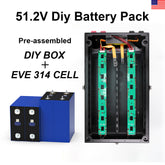

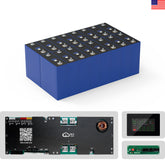

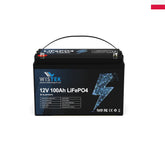
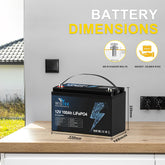

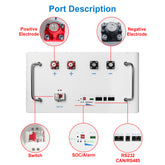
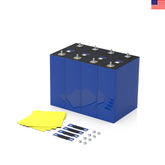
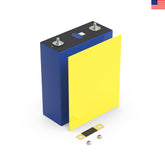
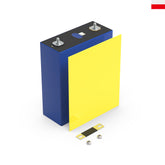

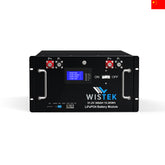
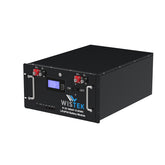
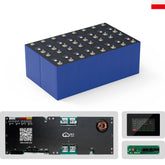








Leave a comment
All blog comments are checked prior to publishing